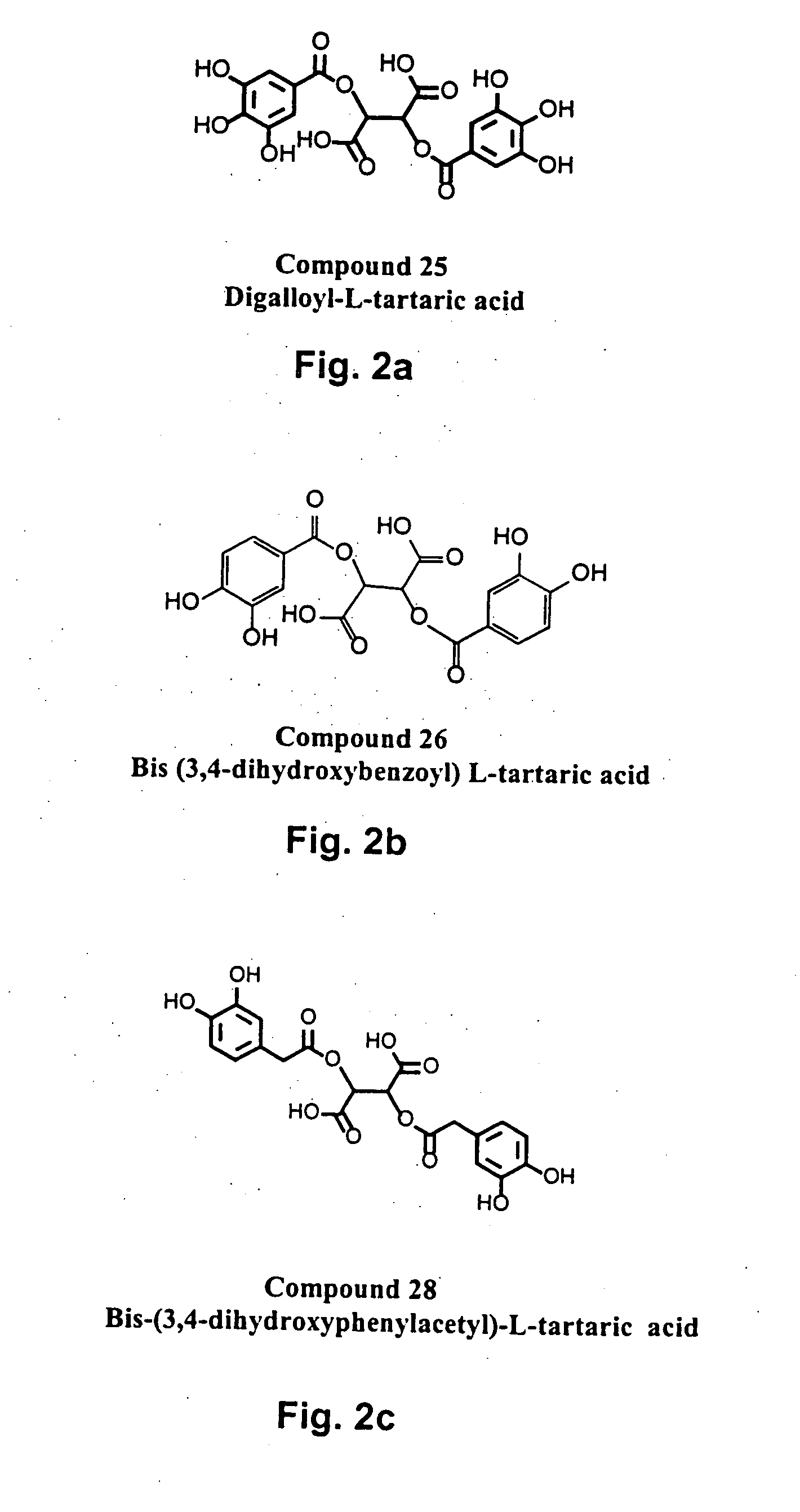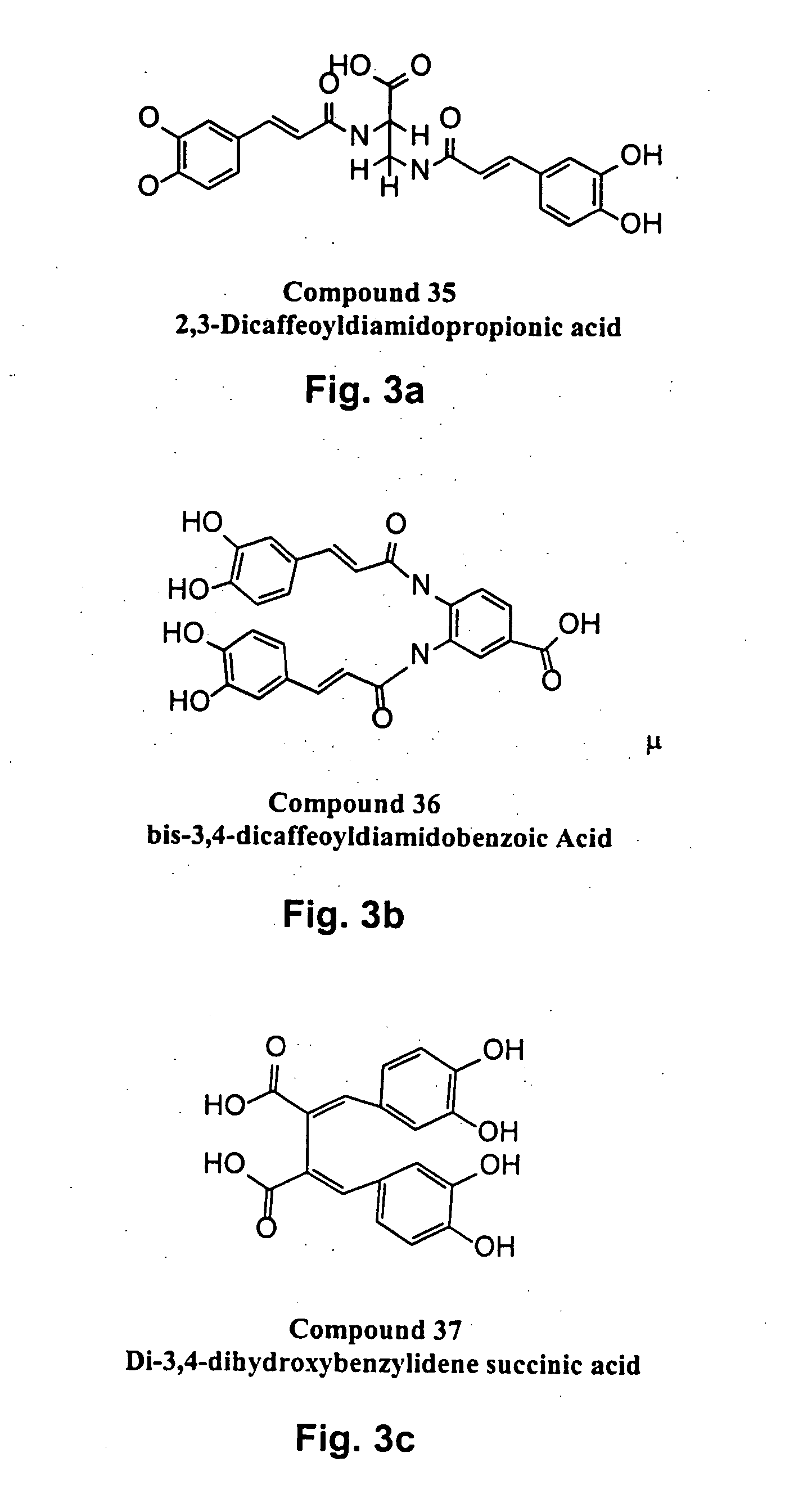Novel HIV integrase inhibitors and HIV therapy based on drug combinations including integrase inhibitors
a technology of integrase inhibitors and combination drugs, applied in the field of medical devices, can solve the problems of high drug combination cost, unsatisfactory current drug regimens, and difficult patient compliance with drug combinations, and achieve the effect of potent synergy
- Summary
- Abstract
- Description
- Claims
- Application Information
AI Technical Summary
Benefits of technology
Problems solved by technology
Method used
Image
Examples
Embodiment Construction
The present invention generally related to integrase inhibitors having the general structural formula (formula(I)):
Wherein, R1 and R3 are selected from hydrogen, OR6, NR6 and aralkyl groups, optionally substituted with between one and three substituents selected from hydroxyl, halo, lower alkoxy, lower alkylcarbonyloxy and lower alkoxycarbonyloxy groups; R and R5 are selected from hydrogen, COOR7 and CONHR7; R2 and R4 are hydrogen or may combine with each other to form a cycloalkyl ring or with R1 and R41 respectively, to form aromatic rings optionally substituted with from one to three substituents selected from OR6 and NR6 groups; R6 is selected from
where, X is a saturated or unsaturated, acyclic or cyclic, straight or branched, chiral or achiral hydrocarbyl group with from 0 to 10 carbon atoms, and Y is selected from CH═CH, n=CH, CH═N, O, S, or NR7. n is between 0 and 4, and m is between 0 and 3. R7 is selected from hydrogen, alkyl and aralkyl groups; R8 is selecte...
PUM
| Property | Measurement | Unit |
|---|---|---|
| Volume | aaaaa | aaaaa |
| Volume | aaaaa | aaaaa |
| Volume | aaaaa | aaaaa |
Abstract
Description
Claims
Application Information
 Login to View More
Login to View More - R&D
- Intellectual Property
- Life Sciences
- Materials
- Tech Scout
- Unparalleled Data Quality
- Higher Quality Content
- 60% Fewer Hallucinations
Browse by: Latest US Patents, China's latest patents, Technical Efficacy Thesaurus, Application Domain, Technology Topic, Popular Technical Reports.
© 2025 PatSnap. All rights reserved.Legal|Privacy policy|Modern Slavery Act Transparency Statement|Sitemap|About US| Contact US: help@patsnap.com



